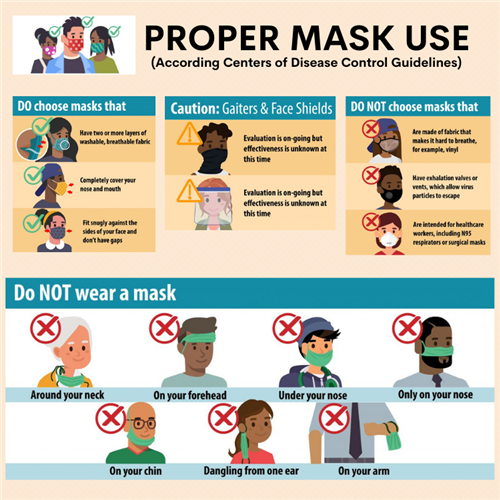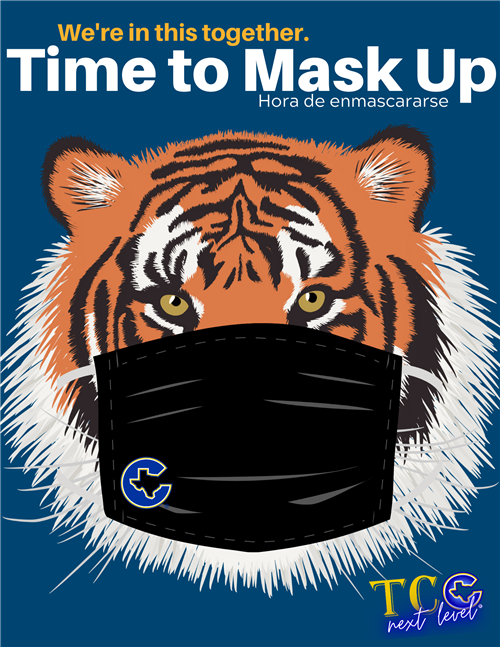- Corsicana ISD
- Covid-19 Information
-
BASIC FACTS:
WHAT IS Coronavirus (COVID-19)?
Coronavirus (COVID-19) is a virus strain that has only spread in people since December 2019. Health experts are concerned because little is known about this new virus.
Reported cases have ranged from mild illness (similar to a common cold) to severe pneumonia that requires hospitalization. So far, deaths have been reported mainly in older adults who had other health conditions.
People who have been diagnosed with novel coronavirus have reported symptoms that may appear in as few as two days or as long as 14 days after exposure.
Symptoms of the coronavirus are fever, cough and shortness of breath. The virus may be transmitted by being in close proximity with droplet contact (coughing, sneezing, etc.) from an infected person or from surfaces. New reports say the virus can live on surfaces for up to 48 hours.
HOW DOES THE VIRUS SPREAD?
Health experts are still learning the details. Currently, it is thought to spread:
- Between people who are in close contact with one another (within about 6 feet).
- Via respiratory droplets produced when an infected person coughs or sneezes.
- These droplets can land in the mouths or noses of people who are nearby or possibly be inhaled into the lungs.
- Touching your mouth, eyes and nose if virus is on your hands. New studies indicate it may be able to live on surfaces for up to 48 hours.
Who is considered as a “Close Contact” when contact tracing with a positive Covide-19 case?
Corsicana ISD is following the Texas Education Agency’s Guidelines for identifying individuals who have made “Close Contact” with a lab-confirmed COVID-19 case. While each case may vary, the following information is used by CISD’s administration and health professionals when determining students and staff who may be affected.
“Close Contact” Definition
This information refers to “close contact” with an individual who is test-confirmed to have COVID-19. Close contact is defined by the Texas Education Agency as: a. being directly exposed to infectious secretions (e.g., being coughed on); or b. being within 6 feet for a largely uninterrupted or sustained extended contact period throughout the course of a day of approximately 15 minutes; however, additional factors, such as case/contact masking (i.e., both the infectious individual and the potential close contact have been consistently and properly masked), ventilation, presence of dividers, and case symptomology may affect this determination. Either (a) or (b) defines close contact if it occurred during the infectious period of the case, defined as two days prior to symptom onset to 10 days after symptom onset. In the case of asymptomatic individuals who are test-confirmed with COVID-19, the infectious period is defined as two days prior to the confirming lab test and continuing for 10 days following the confirming lab test. (Texas Education Agency Update 9.2.2020)
WHAT CAN I DO TO PREVENT CORONAVIRUS?
- Students and staff should stay home when they are sick. If students or staff members have a fever, they should stay home until they are fever-free.
- Avoid other people who are sick.
- Everyone - students, staff, school volunteers and visitors - should wash their hands frequently with soap and water for at least 20 seconds (about as long as it takes to sing “Happy Birthday” twice). We will be providing an increased emphasis on handwashing in our schools. The CDC says the washing of hands is the first line of defense. In fact, one of our sources states that washing your hands at least five times a day could reduce the likelihood of contracting a respiratory infection by around 15 to 20%.
- Cover coughs and sneezes with a tissue or your arm. The CDC is not advising the wearing of masks.
- Avoid touching your eyes, mouth and nose.
- Parents are reminded to consult their physician if they have any concerns.
- Residents who return from recent international travel with history of travel to affected areas and become ill with respiratory signs and symptoms such as fever and cough should report their travel history to any health professional or medical facility when they visit.




